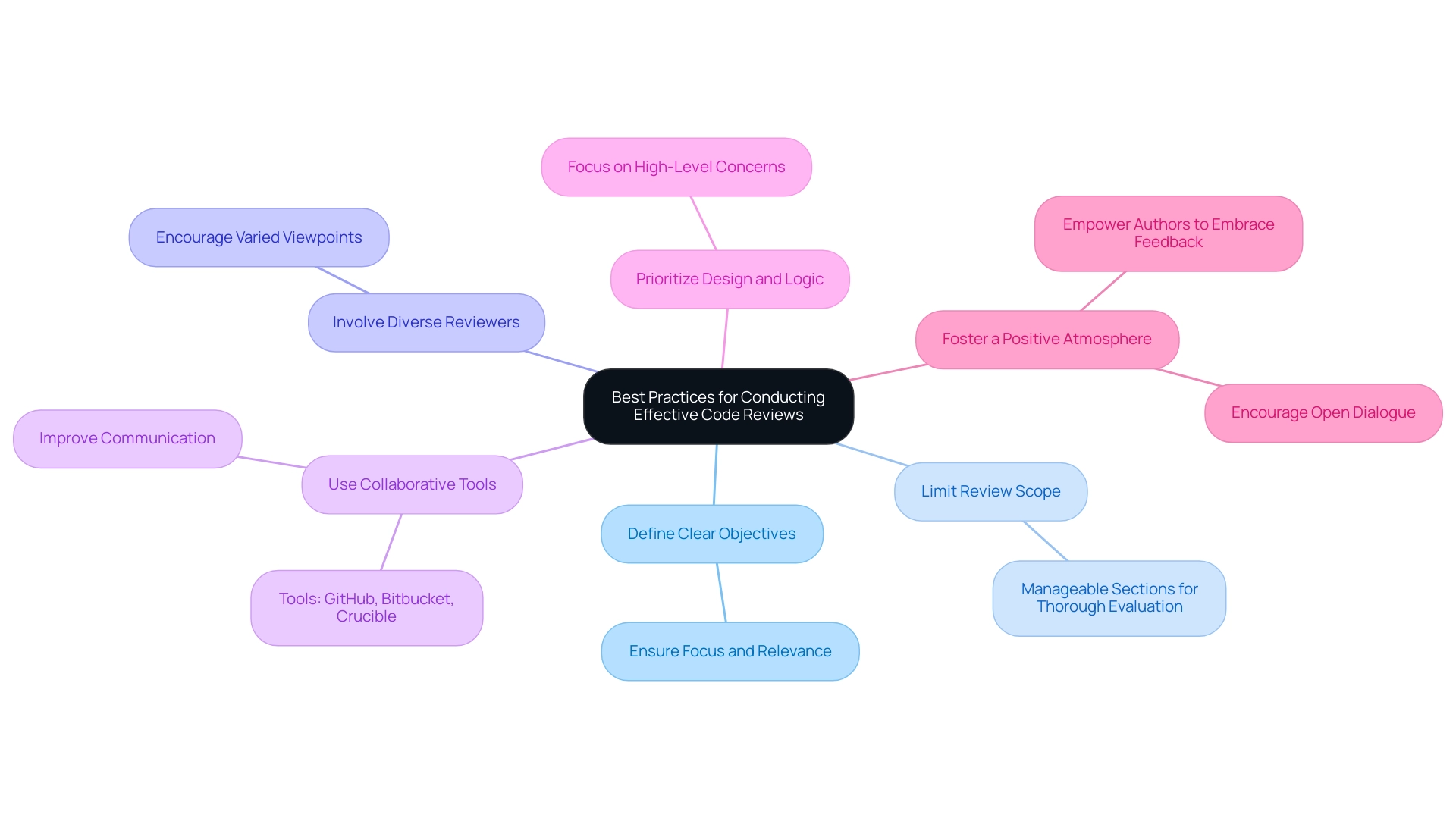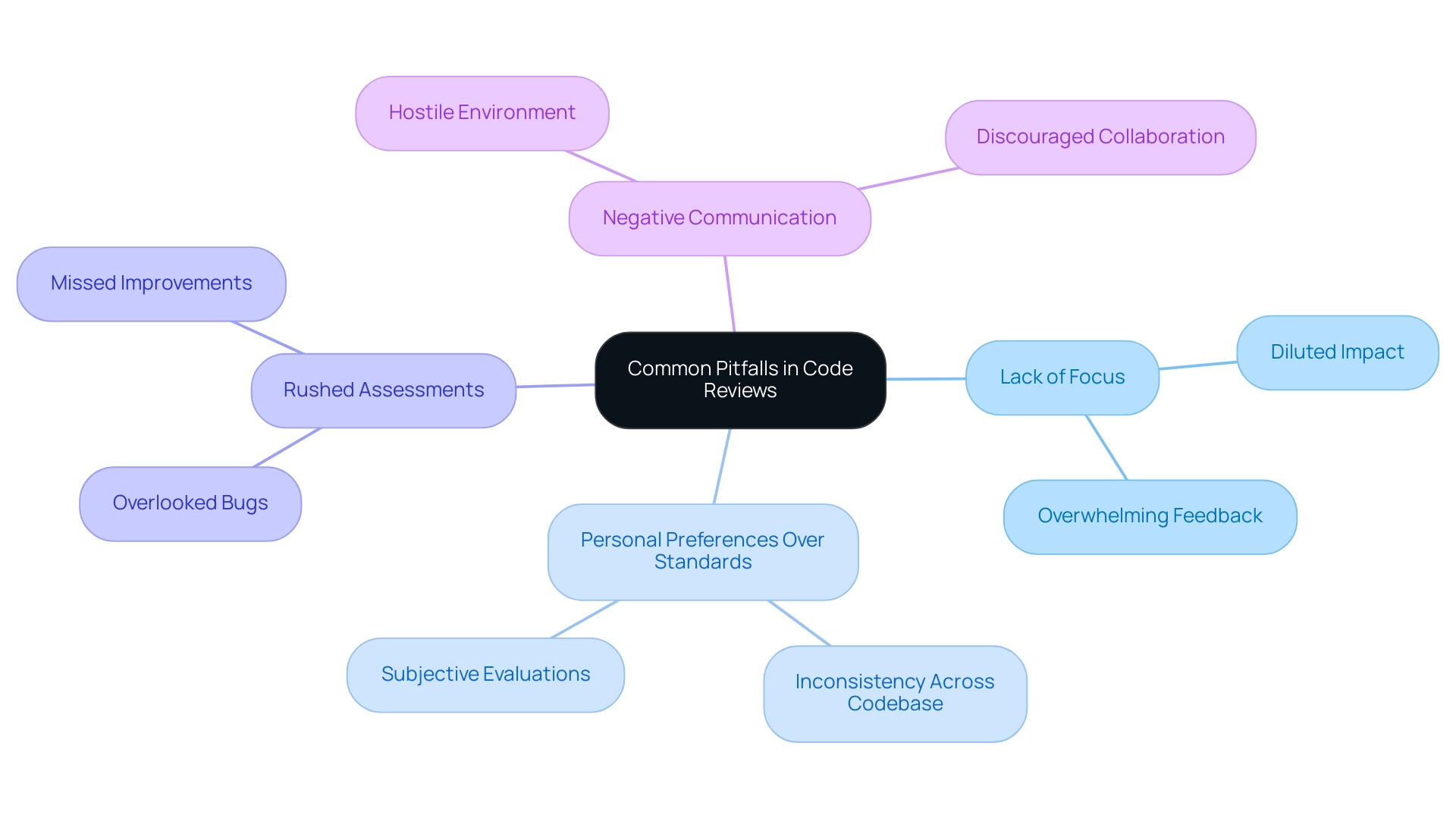Introduction
In the fast-evolving world of software development, code reviews have emerged as a cornerstone practice for ensuring high-quality code and fostering team collaboration. By systematically evaluating code, developers can identify bugs, enhance functionality, and maintain coding standards. Recent statistics reveal that effective code reviews can reduce post-release defects by up to 35%, highlighting their crucial role in the development lifecycle.
As teams increasingly turn to automated solutions like Kodezi CLI, the process of code reviewing becomes even more streamlined, allowing for quicker identification of issues and a significant boost in productivity. This article delves into the essentials of code reviews, exploring their importance, best practices, and common pitfalls to avoid, all while showcasing how leveraging tools like Kodezi can transform the code review process into a powerful mechanism for continuous improvement and collaboration.
Defining Code Reviews: What They Are and Why They Matter
An assessment is a methodical evaluation of source material, typically conducted by programmers other than the original creator. This process aims to identify bugs, improve quality, and enhance overall functionality. According to recent statistics, program assessments can lead to a 30% reduction in post-release defects in 2024, underscoring their effectiveness in enhancing software quality.
Acting as a crucial milestone in the software development lifecycle, evaluations guarantee that the programming adheres to established standards and best practices. Recent trends indicate a shift towards automated code review tools, such as Kodezi CLI, which are gaining popularity due to their efficiency and ability to integrate seamlessly into development workflows. Kodezi CLI autonomously enhances codebases, detects problems prior to production, and boosts programming efficiency across multiple programming languages, rendering it an invaluable resource for B2B engineering groups.
For a quick start, groups can utilize the '5 minute quick start guide' and see a demo to better understand its functionalities. Expert Jane Doe states, 'Code evaluations are not solely focused on identifying issues; they are about promoting a culture of cooperation and learning among groups.' Participating in program evaluations consistently, particularly when paired with Kodezi's automated debugging and testing functions, enables groups to identify potential problems early, reduce technical debt, and ultimately provide more reliable software products.
The systematic examination of code, enhanced by AI-driven tools, not only improves software quality but also significantly impacts key quality metrics, making it an essential practice in today's development landscape.
The Importance of Code Reviews: Enhancing Quality and Collaboration
Code evaluations are crucial for improving software quality and fostering collaboration among development groups. By inviting peer scrutiny, groups can uncover potential flaws that the original author may have missed, ultimately reducing defect rates significantly. Research indicates that effective evaluations of programming can lead to a reduction of defects by up to 35%, underscoring their importance in the development lifecycle.
However, with Kodezi CLI, B2B engineering groups can take this process a step further by autonomously improving codebases and fixing bugs before they reach production. As per a study conducted by Lightspeed, 77% of software developers think that peer assessments result in superior quality programming and improved collaboration among groups, and Kodezi CLI boosts this interaction by enabling groups to auto-repair codebases in seconds, thereby never wasting time on a pull request again.
This collaborative process not only improves software quality but also encourages knowledge sharing, enabling members to learn from each other's insights and experiences. For example, a case study on teamwork in programming assessments showed that groups adopting organized peer evaluations experienced a 40% enhancement in quality metrics over six months.
Experts emphasize that this exchange of ideas fosters a culture of continuous improvement, where coding standards are upheld, and consistency throughout the codebase is maintained—an essential factor for long-term maintainability. The iterative feedback cycle created through assessments, along with Kodezi CLI's features, not only streamlines the development process but also provides developers with the tools necessary to produce robust and efficient software solutions.
By sharing experiences and insights, developers can collectively enhance their coding practices, leading to improved outcomes across projects. To get started with Kodezi CLI, check out our 5 minute quickstart guide and see a demo of how this Swiss-Army Knife for programmers can revolutionize your coding experience.
Best Practices for Conducting Effective Code Reviews
Implementing a structured approach to code assessments is crucial for maximizing their effectiveness, especially when leveraging tools like Kodezi. Key West practices involve:
- Defining clear objectives for each evaluation to ensure focus and relevance.
- Limiting the scope of reviews to manageable sections, allowing for thorough evaluation without overwhelming reviewers.
- Involving various reviewers to encourage diverse viewpoints, resulting in more thorough evaluations.
- Employing collaborative tools like GitHub, Bitbucket, and Crucible to improve communication and simplify the review process, making it easier for teams to discuss and resolve issues.
- Prioritizing high-level design, logic, and performance concerns over minor stylistic issues, promoting a more productive evaluation environment.
- Fostering a positive and respectful atmosphere to encourage open dialogue, empowering authors to embrace feedback constructively.
According to June Turner, Director, 'A well-structured review process not only enhances quality but also boosts team morale.'
Furthermore, Kodezi’s automated programming debugging capabilities can instantly identify and resolve issues, ensuring compliance with the latest security best practices and enhancing performance. Kodezi’s automated builds further streamline the software development lifecycle by enhancing changes from developers and catching bugs before they multiply, increasing quality with each release.
A SmartBear study on code assessment practices found that lightweight evaluations take less than 20% of the time of formal assessments yet identify an equivalent number of bugs, demonstrating that efficiency does not compromise quality. For instance, a software group at Cisco established an organized evaluation process that incorporated regular check-ins and input sessions, enhanced by Kodezi's AI-driven testing and seamless deployment features, leading to a notable reduction in bug rates.
By following these best practices and utilizing Kodezi’s suite of tools, teams can significantly enhance the accuracy of their modifications, as evidenced by the 95% accuracy rate achieved after implementing evaluations.

Providing Constructive Feedback: The Heart of Code Reviews
Constructive criticism stands as the backbone of successful code reviews, serving as a catalyst for improvement and learning. Recent findings show that companies with 501 or more employees can be liable for up to $300,000 in damages due to poor evaluation practices, emphasizing the necessity for effective communication. It is essential that responses be specific, actionable, and oriented toward fostering growth. Reviewers should not only indicate what needs modification but also elucidate the reasons behind those recommendations. This rationale assists authors in understanding the purpose of the comments, fostering an atmosphere conducive to improvement.
As Carla, an Asian American employee, noted, 'I was subjected to frequent offensive comments based on race and sex by my first-level supervisor,' emphasizing the critical need for respectful communication in professional settings. Finding a balance between constructive criticism and positive reinforcement is essential; acknowledging well-executed features or innovative solutions motivates developers to be more open to suggestions. A respectful and supportive tone in communications fosters a culture where continuous improvement thrives, ultimately leading to elevated coding practices and the development of more resilient software solutions.
As shown by recent findings, the quality of responses significantly correlates with developer performance, making it essential for groups to adopt effective strategies that prioritize actionable insights. Case studies on delivering constructive critiques in programming assessments demonstrate that teams adopting organized feedback methods experience significant enhancements in developer satisfaction and quality of work.
Common Pitfalls in Code Reviews: What to Avoid
Assessments of programming, while crucial for upholding quality, can face numerous substantial challenges that obstruct their efficiency. According to recent data, code evaluation failure rates due to common pitfalls can reach up to 30%, underscoring the importance of addressing these issues.
One of the foremost problems is a lack of focus; when evaluations attempt to tackle too many issues simultaneously, they can overwhelm authors and dilute the feedback's impact. This is compounded by the tendency for reviewers to prioritize personal preferences over established coding standards, resulting in inconsistency across the codebase.
Additionally, the pressure to expedite evaluations often leads to hurried assessments, where critical bugs and potential improvements may be overlooked. As mentioned by Added, 'A negative or confrontational tone during evaluations can foster a hostile environment,' ultimately discouraging collaboration and stifling innovation.
Moreover, case studies have demonstrated that groups that utilize organized assessment methods and uphold an encouraging tone significantly decrease the frequency of these traps. Awareness of these issues is crucial; by implementing targeted strategies to mitigate them, teams can transform code reviews into productive, positive experiences that significantly enhance overall efficiency and team dynamics.

Conclusion
Embracing code reviews as a fundamental practice in software development is essential for achieving high-quality outcomes and fostering a collaborative team environment. By systematically evaluating code, teams can significantly reduce defects, enhance functionality, and uphold coding standards. The integration of automated tools like Kodezi CLI further amplifies these benefits, allowing for a more efficient and effective review process that identifies issues early and promotes continuous improvement.
The importance of a structured approach cannot be understated. Implementing best practices such as defining clear objectives, engaging multiple reviewers, and maintaining respectful communication can transform the code review process into a powerful engine for learning and growth. Constructive feedback serves as the cornerstone of this practice, enabling developers to refine their skills and contribute to a culture of excellence within the team.
However, awareness of common pitfalls is crucial to maintaining the effectiveness of code reviews. By avoiding distractions, prioritizing established standards, and fostering a positive atmosphere, teams can ensure that code reviews are not only productive but also enjoyable. Leveraging tools like Kodezi CLI empowers teams to navigate these challenges seamlessly, ultimately leading to the delivery of more reliable software solutions.
In a rapidly evolving landscape, embracing the power of code reviews—enhanced by automation—will not only elevate the quality of software products but also cultivate a collaborative spirit that drives innovation and success. Teams that prioritize these practices are well-positioned to thrive in the competitive world of software development.
Frequently Asked Questions
What is the purpose of an assessment in programming?
An assessment is a methodical evaluation of source material aimed at identifying bugs, improving quality, and enhancing overall functionality, typically conducted by programmers other than the original creator.
How effective are program assessments in reducing defects?
Recent statistics indicate that program assessments can lead to a 30% reduction in post-release defects, highlighting their effectiveness in enhancing software quality.
What role do automated code review tools, like Kodezi CLI, play in assessments?
Automated code review tools like Kodezi CLI enhance codebases, detect problems before production, and improve programming efficiency by integrating seamlessly into development workflows.
How do program evaluations benefit development teams?
Program evaluations promote a culture of cooperation and learning, enabling teams to identify potential problems early, reduce technical debt, and ultimately provide more reliable software products.
What are some best practices for conducting effective code assessments?
Best practices include defining clear objectives, limiting the scope of reviews, involving diverse reviewers, using collaborative tools, prioritizing significant concerns over minor issues, and fostering a positive atmosphere for open dialogue.
What is the impact of constructive criticism in code reviews?
Constructive criticism is essential for improvement, as it encourages growth and learning among developers. Effective communication should be specific, actionable, and foster a respectful environment.
What common challenges do programming assessments face?
Common challenges include lack of focus, prioritizing personal preferences over standards, hurried evaluations, and negative communication tones, which can hinder the effectiveness of assessments.
How can teams overcome the challenges faced during assessments?
By implementing targeted strategies such as organized assessment methods and maintaining a supportive tone, teams can transform code reviews into productive experiences that enhance efficiency and collaboration.




